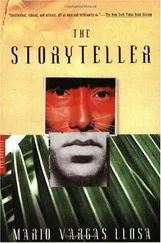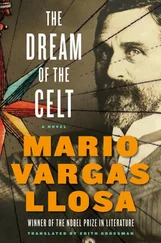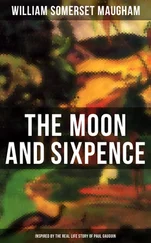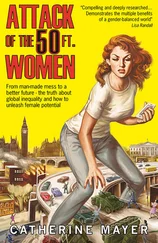Mario Llosa - The Real Life of Alejandro Mayta
Здесь есть возможность читать онлайн «Mario Llosa - The Real Life of Alejandro Mayta» весь текст электронной книги совершенно бесплатно (целиком полную версию без сокращений). В некоторых случаях можно слушать аудио, скачать через торрент в формате fb2 и присутствует краткое содержание. Год выпуска: 1998, Издательство: Farrar, Straus and Giroux, Жанр: Современная проза, на английском языке. Описание произведения, (предисловие) а так же отзывы посетителей доступны на портале библиотеки ЛибКат.
- Название:The Real Life of Alejandro Mayta
- Автор:
- Издательство:Farrar, Straus and Giroux
- Жанр:
- Год:1998
- ISBN:нет данных
- Рейтинг книги:4 / 5. Голосов: 1
-
Избранное:Добавить в избранное
- Отзывы:
-
Ваша оценка:
- 80
- 1
- 2
- 3
- 4
- 5
The Real Life of Alejandro Mayta: краткое содержание, описание и аннотация
Предлагаем к чтению аннотацию, описание, краткое содержание или предисловие (зависит от того, что написал сам автор книги «The Real Life of Alejandro Mayta»). Если вы не нашли необходимую информацию о книге — напишите в комментариях, мы постараемся отыскать её.
The Real Life of Alejandro Mayta — читать онлайн бесплатно полную книгу (весь текст) целиком
Ниже представлен текст книги, разбитый по страницам. Система сохранения места последней прочитанной страницы, позволяет с удобством читать онлайн бесплатно книгу «The Real Life of Alejandro Mayta», без необходимости каждый раз заново искать на чём Вы остановились. Поставьте закладку, и сможете в любой момент перейти на страницу, на которой закончили чтение.
Интервал:
Закладка:
But had he, Jacinto, Medardo, the comrades of the RWP(T), and those in the other RWP become just as academic? Had they forgotten the true hierarchy of things — that there was a difference between essentials and extraneous matters? Had their revolutionary work become as esoteric and pedantic as literature, history, and philosophy had for the professors at San Marcos? Listening to Vallejos was like being awakened from a dream: “Don’t forget the essentials, Mayta. Don’t get tangled up in superfluous things, comrade.” He knew nothing, had read nothing, was a virgin — all of that — but in one sense he had an advantage over all of them: the revolution for him was action, something tangible, heaven on earth, the reign of justice, equality, fraternity. He could guess what images the revolution took on in Vallejos’s mind: peasants breaking the chains the bosses had shackled them with, workers who went from being servants to being masters of machines and shops, a society in which surplus value no longer fattens up a minority but reverts back to the workers … and he felt a shiver run down his spine.
Wasn’t he at the corner of Cañete and Zepita? He woke from his reverie and rubbed his arms. Damn! How absent-minded can you get? The corner of Canete and Zepita was one he always avoided, because of the bad taste it left in his mouth whenever he went near it. Right there, in front of the newsstand, the gray-green car had stopped with a screech that still whined in his ears. Before he could figure out what was happening, four thugs got out and he saw four pistols pointed at him. He was frisked, pushed around, and shoved into the car. He had been in police stations and various jails before, but that was the worst and the longest time, the first in which he had been worked over. He thought he would go mad and considered suicide. Ever since, he had avoided that corner, out of a kind of superstition he would have been ashamed to admit. He turned onto Zepita and slowly walked the two blocks to his house. His weariness as usual concentrated in his feet. Damned flat feet. I’m a fakir, he thought. Walking on thousands of tiny needles … He thought: The revolution is a party for that brand-new lieutenant.
He had the second attic room in a house on a dead-end street lined with two-story buildings, an area about nine by fifteen feet, overflowing with books, magazines, and newspapers scattered all over the floor. There was a bed without a headboard, with a mattress and one blanket. A few shirts and some trousers hung from nails in the wall, and behind the door there was a mirror and a little shelf with his shaving things. A dangling bulb shone a dirty light on the room, which was made even smaller by its incredible disorder. As soon as he entered, he went down on all fours to drag out from under the bed — the dust made him sneeze — the chipped basin which was probably the object he treasured most in the place.
The rooms had no bath. In the patio, there were two common lavatories and a faucet, where all the neighbors got water for washing and cooking. During the day there were always lines, but not at night, so Mayta went down, filled his basin, and returned to his room — carefully, so he wouldn’t spill a drop — all in a few minutes. He undressed, lay down on his bed, and sank his feet in the basin. Ah, how restful. He had often fallen asleep giving himself a footbath, and would awaken sneezing and frozen to death. But he didn’t fall asleep this time. While the fresh, soothing sensation spread from his feet to his ankles and legs and the fatigue diminished, he thought that even if it had no concrete effect, it was a good thing that someone reminded him: what happened to those literati, historians, and philosophers at San Marcos should not happen to a revolutionary. A revolutionary should not forget that he lives, fights, and dies to make revolution and not to …
“Let’s get the check,” says Moises. “Enough talk. I’ll pay. Rather, the center will pay. Stick that wallet where the sun won’t shine on it.”
But there is no more sun. The sky has clouded over, and when we leave the Costa Verde, it looks like winter. One of those typical afternoons in Lima, wet, with a low sky that threatens and blusters, promising a storm that never comes. When he picks up his pistol at the entrance—“It’s a 7.65 Browning,” he tells me — Moises checks to see if the safety is on. He puts it in the glove compartment.
“At least tell me what you’ve got so far,” he says as we roll along Quebrada Armendariz in his wine-colored Cadillac.
“A forty-year-old man with flat feet, who’s spent his life in the catacombs of theoretical revolution (or should I say revolutionary intrigue?),” I sum up for him. “In APRA, an APRA dissident; in the Communist Party, a Communist Party dissident; finally, a Trotskyist. Every variant, all the contradictions of the left during the fifties. He lived underground, was jailed, and lived in permanent indigence. But …”
“But what?”
“But the frustration didn’t embitter him or even corrupt him. He stays honest, idealistic, despite that castrating life. Does that sound about right?”
“Basically, yes,” affirms Moises as he slows down to let me off. “But have you ever thought how difficult it is to be corrupted in this country of ours? You have to have opportunities. Most people are honest because they have no choice, don’t you think? Did you ever wonder how Mayta would have reacted if he’d been given a chance to be corrupted?”
“I figure he always behaved in such a way that he never put himself in the path of corruption.”
“You don’t have much to go on yet,” concludes Moisés.
Off in the distance, we hear shots.
Three

To get there from Barranco, you have to go to downtown Lima, cross the Rímac — a squalid creek this time of year — at the Ricardo Palma bridge, go along Piedra Liza and skirt the San Cristobal hills. It’s a long, risky, and at certain times of the day extremely slow route because of all the traffic. It also charts the gradual impoverishment of Lima: the prosperity of Miraflores and San Isidro progressively decays and grows ugly in Lince and La Victoria, then resurges illusively in the downtown area, with the tedious towers of banks, mutual-fund and insurance companies — among which nevertheless there proliferate promiscuous tenements and old houses that stay upright only by a miracle. But immediately after you cross the river, in the so-called Bajo el Puente sector, the city decomposes into vacant lots, where huts thrown together out of matting and rubble have sprung up, slums mixed in with garbage dumps that go on for miles. Once this marginal Lima was only poor, but now it’s a place of blood and terror as well.
When you come to Avenida de los Chasquis, the asphalt gives out and the potholes take over, but a car can still bounce along a few more yards, fenced-in lots on either side, and broken streetlights — the kids smash the bulbs with slingshots. Since it’s my second visit, I won’t be so dumb as to go beyond the store where I got stuck last time. My last trip involved some slapstick comedy. When I finally figured out that I was definitively stuck in the mud, I asked some boys talking on the corner to give me a push. They helped me, but before getting down to pushing, they held a knife to my throat and threatened to kill me if I didn’t give them everything I had. They took my watch, my wallet, my shoes, and my shirt. They allowed me to keep my trousers. While they pushed the car, we talked. Were there many murders in the neighborhood? Quite a few. Political assassinations? Yeah, them too. Just yesterday, a decapitated body was found just down the way there, with a sign on it: “Stinking Squealer.”
Читать дальшеИнтервал:
Закладка:
Похожие книги на «The Real Life of Alejandro Mayta»
Представляем Вашему вниманию похожие книги на «The Real Life of Alejandro Mayta» списком для выбора. Мы отобрали схожую по названию и смыслу литературу в надежде предоставить читателям больше вариантов отыскать новые, интересные, ещё непрочитанные произведения.
Обсуждение, отзывы о книге «The Real Life of Alejandro Mayta» и просто собственные мнения читателей. Оставьте ваши комментарии, напишите, что Вы думаете о произведении, его смысле или главных героях. Укажите что конкретно понравилось, а что нет, и почему Вы так считаете.












